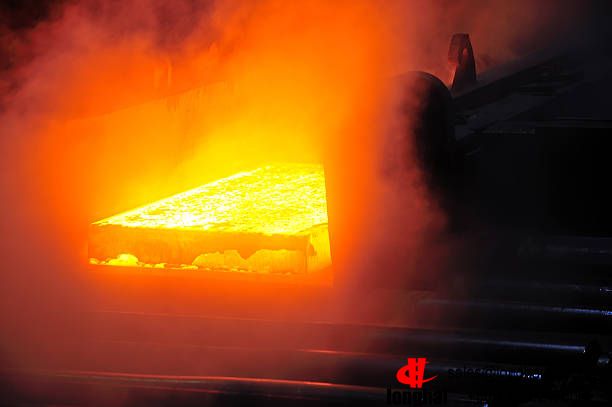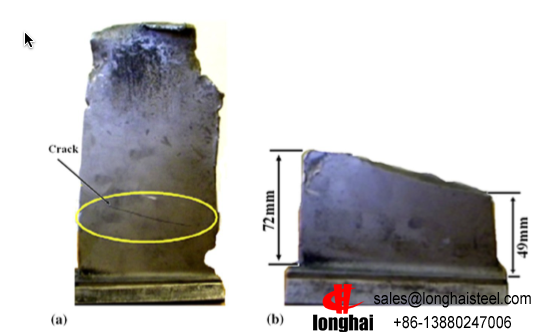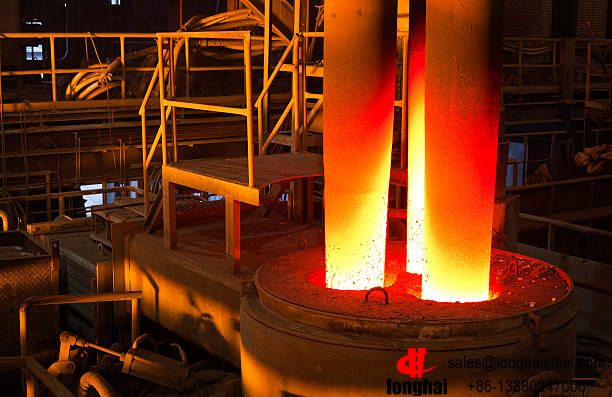Custom 450® stainless is a martensitic age-hardenable stainless steel
March 02,2023

Custom 450® stainless is a martensitic age-hardenable stainless steel which exhibits very good corrosion resistance with moderate strength. Custom 450 has a yield strength somewhat greater than 690MPa in the annealed condition. solution aging treatment develops higher strength with good ductility and toughness.Custom 450® stainless can be machined, hot-worked, and cold-formed in the same manner as other martensitic agehardenable stainless steels. A particular advantage is ease of welding and brazing.
Custom 450 stainless is generally supplied in the annealed condition, requiring no heat treatment by the user for many applications. Because it has corrosion resistance like Type 304 stainless but three times the yield strength, it has been used in applications where Type 304 was not strong enough. On the other hand, it has also replaced Type 410 stainless directly on a strength basis where Type 410 had insufficient corrosion resistance. Mechanical properties will depend on the aging temperature selected.
Custom 450® stainless Similar materials and properties
There are a number of other alloys that are available for specific applications.
- Grade: X5CrNiCuNb17-4-aisi-630-s17400-1-4542-steels-of-blade-for-steam-and-gas-turbine" target="_blank" class="keylink">17-4ph-x5crnicunb16-4-X5CrNiCuNb17-4-aisi-630-s17400-1-4542-1-4548-4-steels-of-blade-for-steam-and-gas-turbine" title="Custom 630 stainless">Custom 630 stainless
- Characteristic: Similar to Custom 450 stainless, but must be aged prior to use. It cannot be used in the solutionannealed condition.
- Grade: 15Cr-5Ni stainless
- Characteristic: Similar to Custom 630 stainless, but has better transverse ductility and toughness.
- Grade: Pyromet® Alloy 350
- Characteristic: Depending on heat treatment, can have an austenitic structure for best formability, or a martensitic structure, for higher strength up to intermediate elevated temperatures.
- Grade: Pyromet Alloy 355
- Characteristic: Similar to Pyromet Alloy 350 but with a lower ferrite content
High temperature use
Custom 450 stainless shows excellent resistance to oxidation up to approximately 1200ºF (649ºC). Significant aging occurs when annealed material is heated to 700ºF (371ºC) and higher. Long-term exposure to elevated temperatures can result in reduced toughness in precipitation hardenable stainless steels. The reduction in toughness can be minimized in some cases by using higher aging temperatures. Short exposures to elevated temperatures can be considered, provided the maximum temperature is at least 50ºF(28ºC) less than the aging temperature.
Corrosion Resistance
Custom 450 stainless has resisted atmospheric corrosion including salt water atmospheres. It shows excellent resistance to rusting and pitting in 5% and 20% salt spray at 95ºF (35ºC). Tests in hot concentrated nitric acid show corrosion resistance approaching that of Type 304. Optimum corrosion resistance for this alloy is obtained in the annealed condition. However, age hardening results in only a slight change. For optimum corrosion resistance, surfaces must be free of scale, lubricants, foreign particles, and coatings applied for drawing and heading. After fabrication of parts, cleaning and/or passivation should be considered.
Workability
Hot Working
- This alloy is easily hot worked in the temperature range of 1650/2300ºF (900/1260ºC). The optimum hot-working range is 2100/2150ºF (1150/1177ºC) for the best combination of ease of working and fine grain size. Cool forgings in air to room temperature and anneal.
Cold Working
- The work-hardening rate of Custom 450 alloy is relative low, permitting a good deal of cold reduction without intermediate annealing. Deep-drawing or stretching operations with sharp bends which produce localized elongation are to be avoided.
Machinability
Custom 450 stainless has been machined successfully using the same practices employed with other martensitic stainless steels at comparable hardness levels. Following are typical feeds and speeds for Custom 450 stainless.
Additional Machinability Notes
When using carbide tools, surface speed feet/minute (sfpm) can be increased between 2 and 3 times over the high speed suggestions. Feeds can be increased between 50 and 100%. Figures used for all metal removal operations covered are average. On certain work, the nature of the part may require adjustment of speeds and feeds. Each job has to be developed for best production results with optimum tool life. Speeds or feeds should be increased or decreased in small steps.
Weldability
Carpenter Custom 450 stainless can be satisfactorily welded by the shielded fusion and resistance welding processes. Oxyacetylene welding is not recommended, since carbon pickup in the weld may occur. Unlike other martensitic stainless steels, no preheating is required to prevent cracking during the welding of this alloy. Normally, the alloy is welded in the solution-annealed condition; however, where high welding stresses are anticipated, it may be advantageous to weld in the overaged (H 1150) condition. If welded in the solutionannealed condition, the alloy can be used as welded or can be aged directly to the desired strength level after welding. However, the optimum combination of strength, ductility and corrosion resistance is obtained by solution annealing the welded part prior to use of aging. If welded in the overaged condition, the part must be solution annealed before aging.

